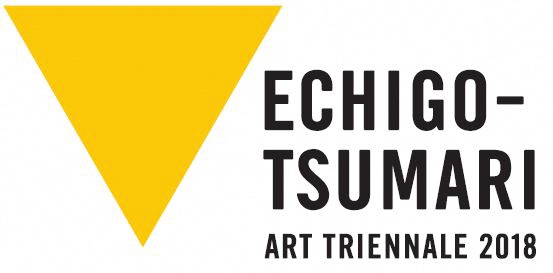What is the “Sado Island Gold Mines”?
Blessed with nature where crested ibis soar in the sky, Sado Island boasted abundant mineral resources. From the 17th to the middle of the 19th century, mines were developed at full scale, making it widely known as the gold-producing island.
During this period, mechanization rapidly progressed in other parts of the world, but the flow of modern technology and knowledge from overseas was restricted due to Japan’s seclusion policy. Under these circumstances, traditional unmechanized mining methods advanced to a high level, enabling mining, smelting, and refining to continue being processed by hand on Sado over 250 years. To improve the efficiency of manual mining operations, the Tokugawa Shogunate established management system along with social organization, which made it possible to produce considerable quantities of high-quality gold for global standards in the 17th century. This is testified by the well-preserved remains of mining sites and settlements that are still kept in good condition, which can be seen as an exceptional example of cultural property in the Asian context.
This was globally recognized as the outstanding universal value and the “Sado Island Gold Mines” was inscribed as a UNESCO World Cultural Heritage Site on July 27, 2024.
Two Mines of the “Sado Island Gold Mines”: “Visible Gold” and “Invisible Gold”
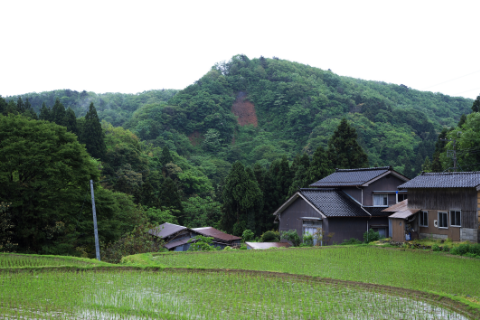
▲ Toramaru-yama Site Photo by Nishiyama Hoichi
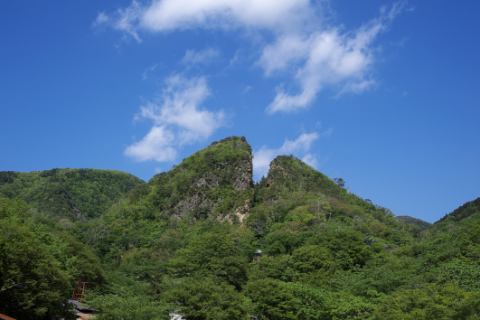
▲ Doyu-no-warito Opencut Site Photo by Nishiyama Hoichi
The “Sado Island Gold Mines” consists of two areas with different types of deposit: the Nishimikawa Placer Gold Mine and the Aikawa-Tsurushi Gold and Silver Mine.
Gold production on Sado Island was first mentioned in the “Tales of Times Now Past,” a collection of tales complied in the 12th century. The site is believed to refer to the Nishimikawa Placer Gold Mine, suggesting that it is the oldest placer gold mine on Sado. In order to efficiently obtain “visible gold,” or placer gold, the “Onagashi” (great flow) method was used during the Edo period. Traces of scraped mountain surfaces, as well as reservoirs and waterways used in “Onagashi” are well preserved around the settlements.
Conversely, the Aikawa-Tsurushi Gold and Silver Mine was developed to extract “invisible gold,” or gold contained in gold and silver veins in solid bedrock. Various technologies and production processes were developed for crushing, finely griding, and chemically processing mined ore. The Aikawa-Tsurushi Gold and Silver Mine consists of two areas: the Tsurushi Silver Mine and the Aikawa Gold and Silver Mine.
The Tsurushi Silver Mine, discovered in 1542, was the largest silver mine on Sado. More than 600 traces of excavation were identified, showing different types of excavation techniques. Also, new technologies involving cupellation (a technology to extract silver from ore by adding lead) were introduced by engineers from Iwami Silver Mine (now a UNESCO World Heritage Site in Shimane Prefecture). This technology laid the foundation for the gold production that would later begin in Aikawa.
Full-scale development in the Aikawa Gold and Silver Mine started in the beginning of the 17th century. Under the direct rule of the Tokugawa Shogunate, a large amount of gold and silver mined on the island were minted into koban coins and supported the Shogunate’s finances.
Sado is the only place in Japan where the entire process from mining through minting was conducted in a single place. These processes were depicted in detail in more than 100 surviving picture scrolls. Archaeological documents and books on mining technology help us understand the production methods and daily lives of people in the mining community.
The globally recognized value and three key features of the “Sado Island Gold Mines”
The globally recognized value of the “Sado Island Gold Mines”
Testimony to the Significant Stage of Gold Production Technology
The Criteria for Selection (iv)※
The “Sado Island Gold Mines” is a testimony to “unmechanized technology in gold production,” UNESCO considers that the property meets the criterion (iv) for world heritage listing, since it serves as testimony to the continuity of high-level manual mining and smelting technology over 250 years in a period where mechanization was progressively advancing elsewhere in the world. For this reason, the “Sado Island Gold Mines” was inscribed on the World Heritage List.
※The selection criteria to be included on the World Heritage List (iv): to be an outstanding example of a type of building, architectural or technological ensemble or landscape which illustrates (a) significant stage(s) in human history
Unmechanized Gold Production Technology
Remains left in good conditions show unmechanized technologies related to gold production and its social organization.
Technology for mining and smelting
(ore-dressing, smelting, and refining)
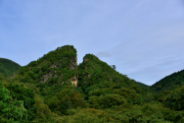
A large-scale surface mining site
(Doyu-no-warito Opencut Site, Aikawa Area)
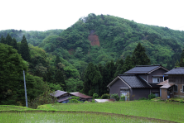
Mining site where “Onagashi” (great flow) was operated
(Toramaru-yama Site, Nishimikawa Area)
▲ ©Nishiyama Hoichi
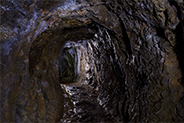
Tunnels with traces of excavation by hand with chisels
(Inside the Otaki-mabu Tunnel Site, Tsurushi Area)
▲ ©Nishiyama Hoichi
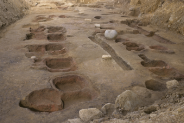
Remains of a refining plant to separate gold from silver
(Sado Magistrate’s Office Site, Aikawa Area)
Management system and social organization established by the Tokugawa Shogunate
to improve production efficiency
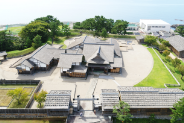
The Sado Magistrate’s Office site, the center of management and administration
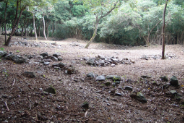
Remains of a mining settlement in the beginning of mine development
(Kami-Aikawa District, Aikawa Area)
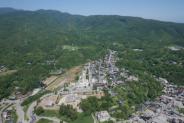
A planned mining town
(Aikawa-Kamimachi Town, Aikawa Area)
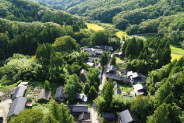
A settlement surrounded by mountains that show traces of excavation
(Nishimikawa Area)
Features of the “Sado Island Gold Mines
The “Sado Island Gold Mines” is the property that demonstrates “unmechanized technology in gold production” and can be understood through three major characteristics.
Gold Production System
(The whole picture)
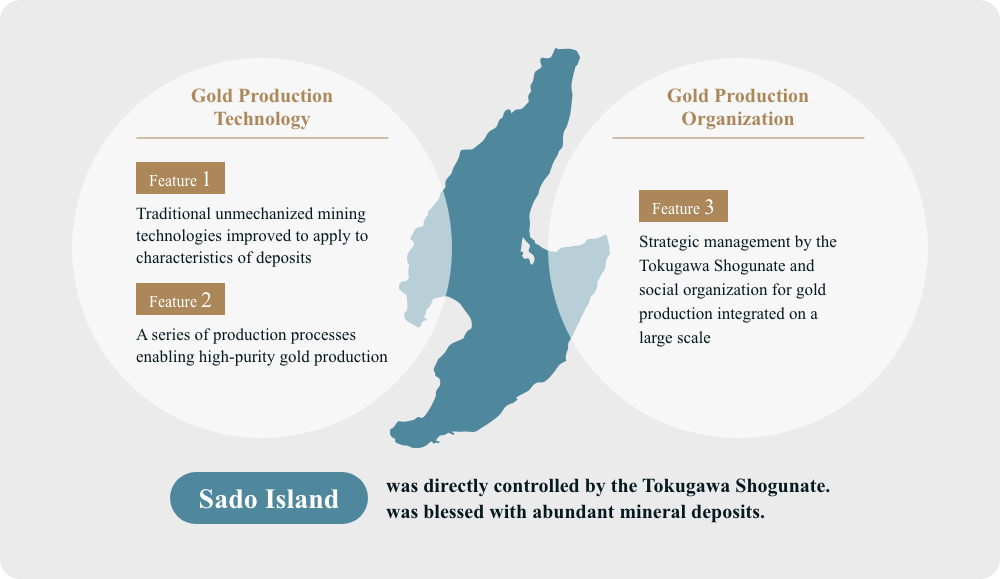

Traditional unmechanized mining technology improved to apply to characteristics of deposits
Technologies suited to each different type of deposit in the two mines, were introduced and developed.
- Nishimikawa Placer Gold Mine – “Onagashi” (great flow) method to obtain placer gold from the sedimentary placer gold deposits
- Aikawa-Tsurushi Gold and Silver Mine – Large-scale and improved excavation technology to excavate hard-rock lode deposits
A series of production processes enabling high-purity gold production
It is clear that a division of labor was established, and efforts were made to improve the expertise and technical precision of the workers involved in each process.
- A series of processes starting from gold mining, ore-dressing, smelting, up to koban coin minting
Strategic management by the Tokugawa Shogunate and gold production system integrated on a large scale
From the remains of settlements and facilities for mine management, we can learn social organization for gold production at that time.
- Production organization seen from differences and transition in the settlement structure.
Other than these physical evidence for gold production technologies, diverse cultures which were deeply connected to mining society can be seen in various places on Sado.
Culture nurtured in the mining community
A unique culture developed from the culture and traditions brought by people involved in gold production from all over Japan.
- Culture nurtured in the mining community
Chronology of the “Sado Island Gold Mines”
| Western Calendar (WC) | Japanese Period | Event | |
|---|---|---|---|
| 12th century | Heian period (794–1195) |
Gold production on Sado Island is mentioned in the “Tales of Times Now Past” (Nishimikawa Placer Gold Mine) | |
| 15th century | Muromachi period (1336–1573) |
Zeami is exiled to Sado and writes “Tales from the Isle of Gold” | |
| 1542 | Tsurushi Silver Mine is discovered | ||
| 1589* | Uesugi Kagekatsu directly controls the Nishimikawa Placer Gold Mine and the Tsurushi Silver Mine and promotes their development. | The major events during the period of the “Sado Island Gold Mines” as a World Heritage Site |
|
| 1596 | Engineers at the Tsurushi Silver Mine discover the Aikawa Gold and Silver Mine. | ||
| 1601 | Tokugawa Ieyasu places Sado Island under his direct control and starts the full-scale development of the Aikawa Gold and Silver Mine. | ||
| 1603 | Edo period (1603-1868) |
Okubo Nagayasu becomes the local magistrate of Sado | |
| 1604 | Sado Magistrate’s Office is built | ||
| 1621 | Production of koban coins begins on Sado | ||
| 1696 | Minamizawa Drainage Tunnel is completed | ||
| 1759 | A yoseseriba (ore-dressing plant) is established at the Sado Magistrate’s Office | ||
| 1868 | Meiji period (1868-1912) |
With the fall of the Tokugawa Shogunate, the management of the gold and silver mines in the Aikawa-Tsurushi Area is taken over by the Meiji government. | |
| 1869 | The mines come under the direct management of the Meiji government | ||
| 1872 | Nishimikawa placer gold mine closes | ||
| 1896 | The management of the mines is transferred to the Mitsubishi Limited Partnership | ||
| 1946 | Showa period (1926-1989) |
Tsurushi Silver Mine closes | |
| 1989 | Heisei period (1989-2019) |
The Sado mines suspend operations |
■:The major events during the period of the “Sado Island Gold Mines” as a World Heritage Site
* This year is subject to change.







